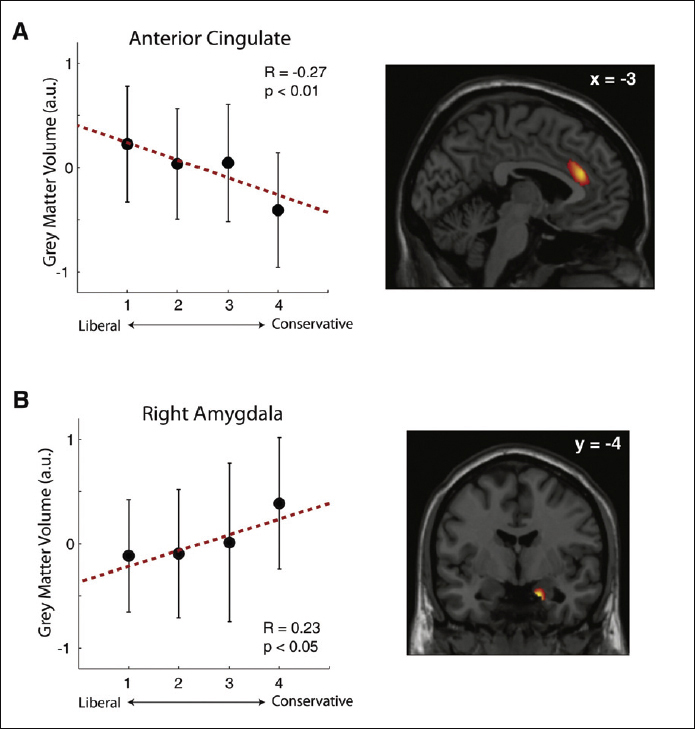
Both genetics and environment influence the structure of the brain. British scientists have recently discovered that even in young adults (mean age 23.5) political orientation is related to differences in brain structure. Participants indicated their political orientation on a four-
KANAI, R., FEILDEN, T., FIRTH, C., & REES, G. (2011). POLITICAL ORIENTATIONS ARE CORRELATED WITHBRAIN STRUCTURES IN YOUNG ADULTS. CURRENT BIOLOGY, 21(8), PP. 677–680. FIGURE 1.